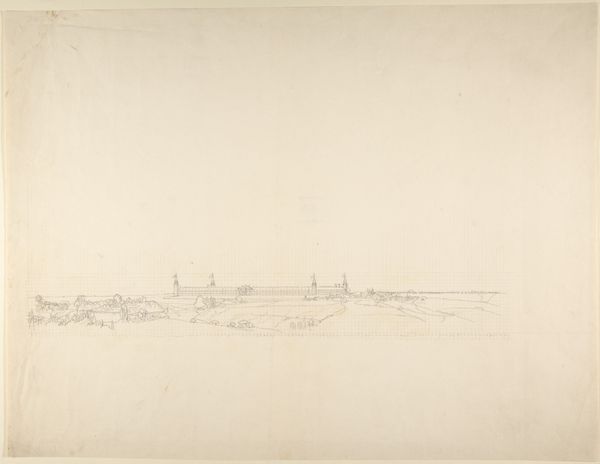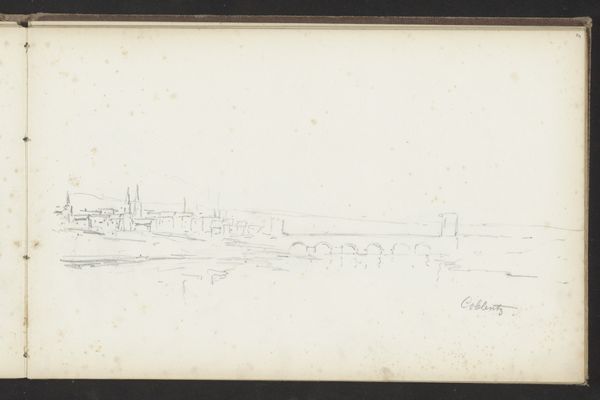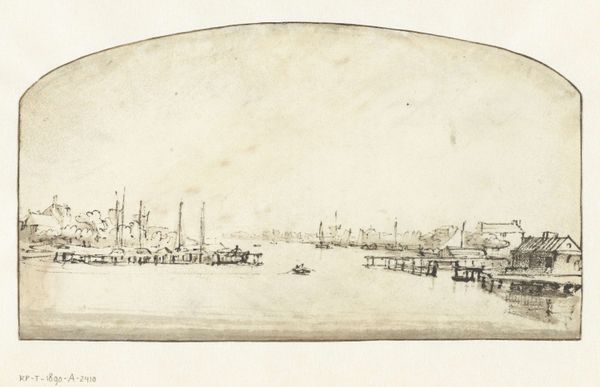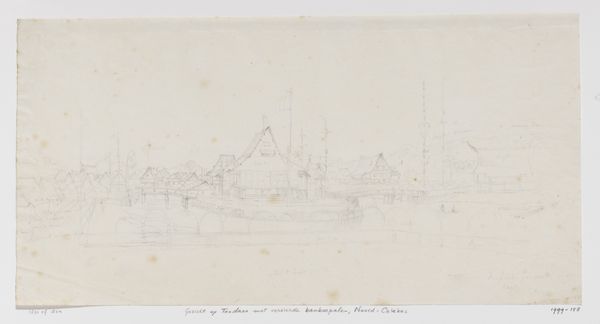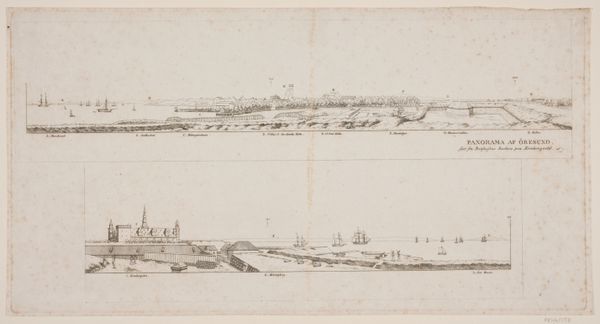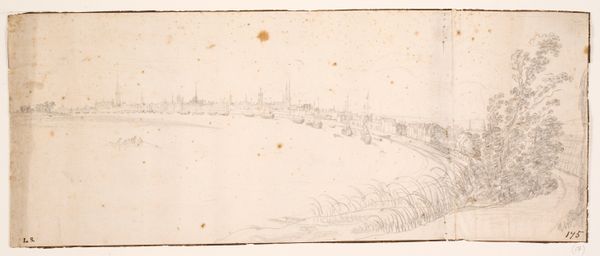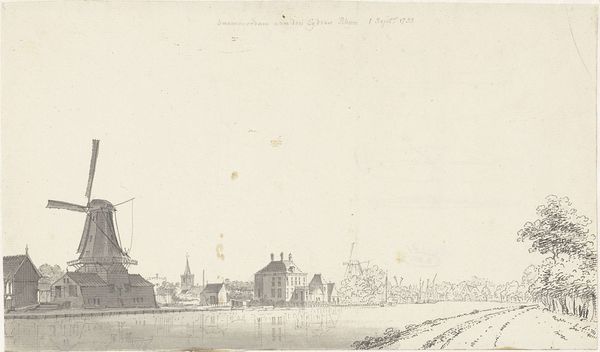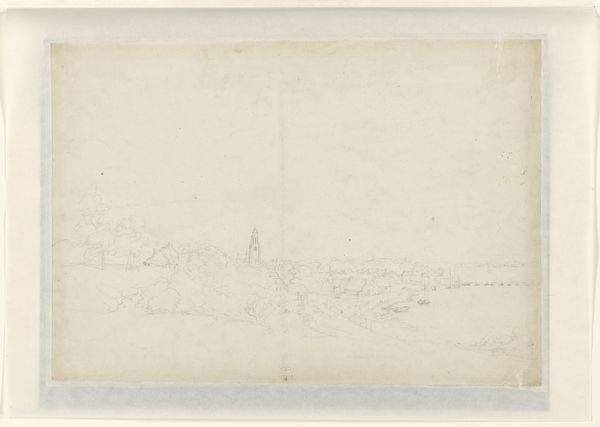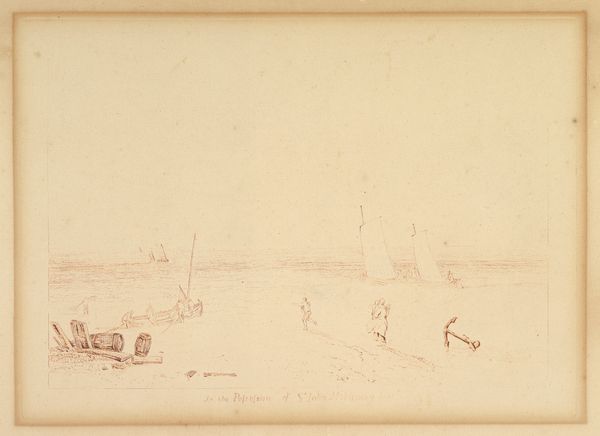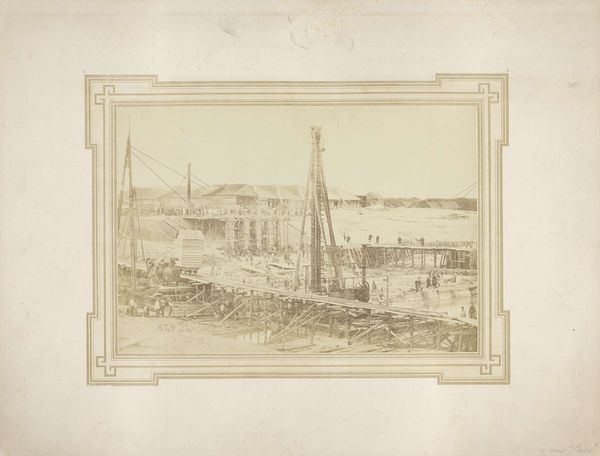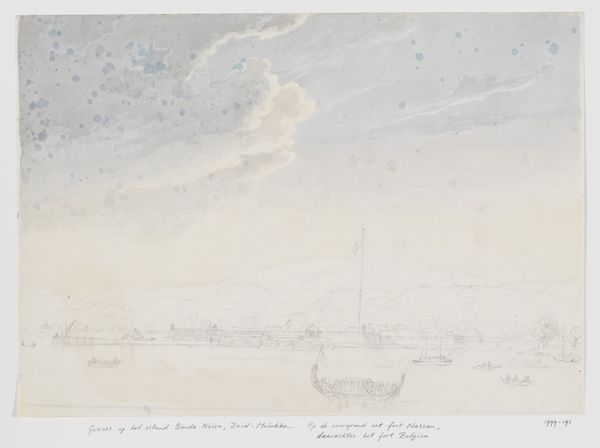
drawing, paper, ink
#
drawing
#
landscape
#
paper
#
ink
#
cityscape
Copyright: Public Domain
Editor: This is "View on Venice," a drawing in ink on paper by Adolf Hoeffler. The skyline seems to fade into the water, and it has an unfinished quality to it, as though glimpsed quickly. How do you interpret this work? Curator: Considering Venice's history as a maritime republic and a powerful trading hub, Hoeffler's choice to depict the city in such a delicate, almost ethereal way is quite telling. It highlights not only the physical beauty but also the precariousness inherent in a city built upon water. The looseness reminds us that the powerful state was also incredibly fragile. What does it suggest to you about power, both historically and perhaps even today? Editor: It does make me consider Venice's decline over the centuries. I hadn't thought of the drawing's style as representing fragility, but that makes perfect sense. Curator: Precisely! The light touch evokes a sense of fleeting beauty and, dare I say, vulnerability, a theme that continues to resonate in contemporary discourse concerning rising sea levels and the future of such iconic cities. Think, too, about who traditionally painted Venice. It's largely a history of wealthy, mostly white male painters capturing the landmarks. How might a different perspective—perhaps a Venetian woman or someone from a marginalized community—have portrayed the same view? Editor: That’s a really interesting question; it definitely reframes how I initially saw the piece. I was mostly focused on the aesthetic of the cityscape. Curator: It’s a reminder that even seemingly straightforward landscapes carry embedded perspectives. By questioning the context and the artist's position, we can unlock deeper layers of meaning. Editor: I've learned so much about reading beyond just the surface of a landscape. Thanks for your insights!
Comments
No comments
Be the first to comment and join the conversation on the ultimate creative platform.
